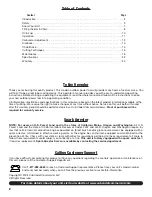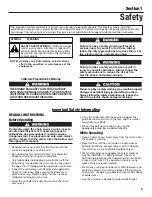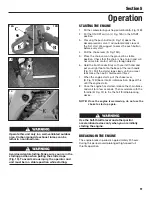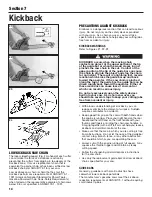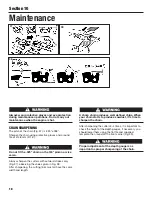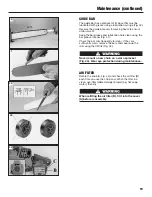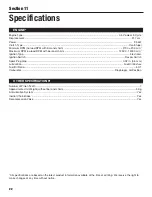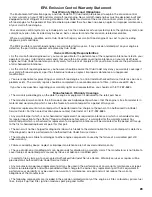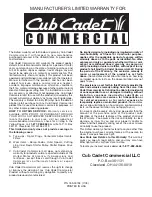
13
Carburetor Adjustment
Section 6
CARBURETOR
Before adjusting the carburetor, clean the starter cover
(Fig. 18), the air filter (Fig. 19) and warm up the engine.
This engine is designed and manufactured in order to
comply with the applicable Exhaust Emission Standards.
The Exhaust Emission Control System includes the
ignition system, the air inlet system and, mainly, the
carburetor.
In this engine,
the carburetor (Fig. 20) is designed to
permit only the adjustment of L and H screws in a
range of half a round
; the half round range admissible
for L and H screws is determined by the manufacturer
and you cannot modify it.
Don’t try to force the screws outside the range!
• Idle screw T is adjusted in order to ensure a good
safety margin between idle running and clutch
engagement.
• Screw L must be adjusted so that the engine promptly
responds to sharp accelerations and gives good idle
operation.
• Screw H must be adjusted so that the engine gives
maximum power during the cutting phase.
Weather conditions and altitude may affect carburetor
performance.
Do not allow anyone to stay close to the chain saw
while working or while adjusting the carburetor.
COLD WEATHER DEVICE
In the event of
temperatures below 0°C
, move the
cursor (A, Fig. 20A) to the winter position. The winter
symbol (Fig. 20A) should remain on the right, not covered
by the gasket. This allows heated air from the cylinder to
enter, preventing formation of ice inside the carburetor.
When the
temperature is above 10°C
, move the cursor
(A, Fig. 20B) to the summer position.
NOTE: Failure to reset this parameter could impair
motor performance due to overheating.
18
H – High speed adjustment screw
L – Low speed needle
T – Idle adjustment screw
19
20
20A
20B


